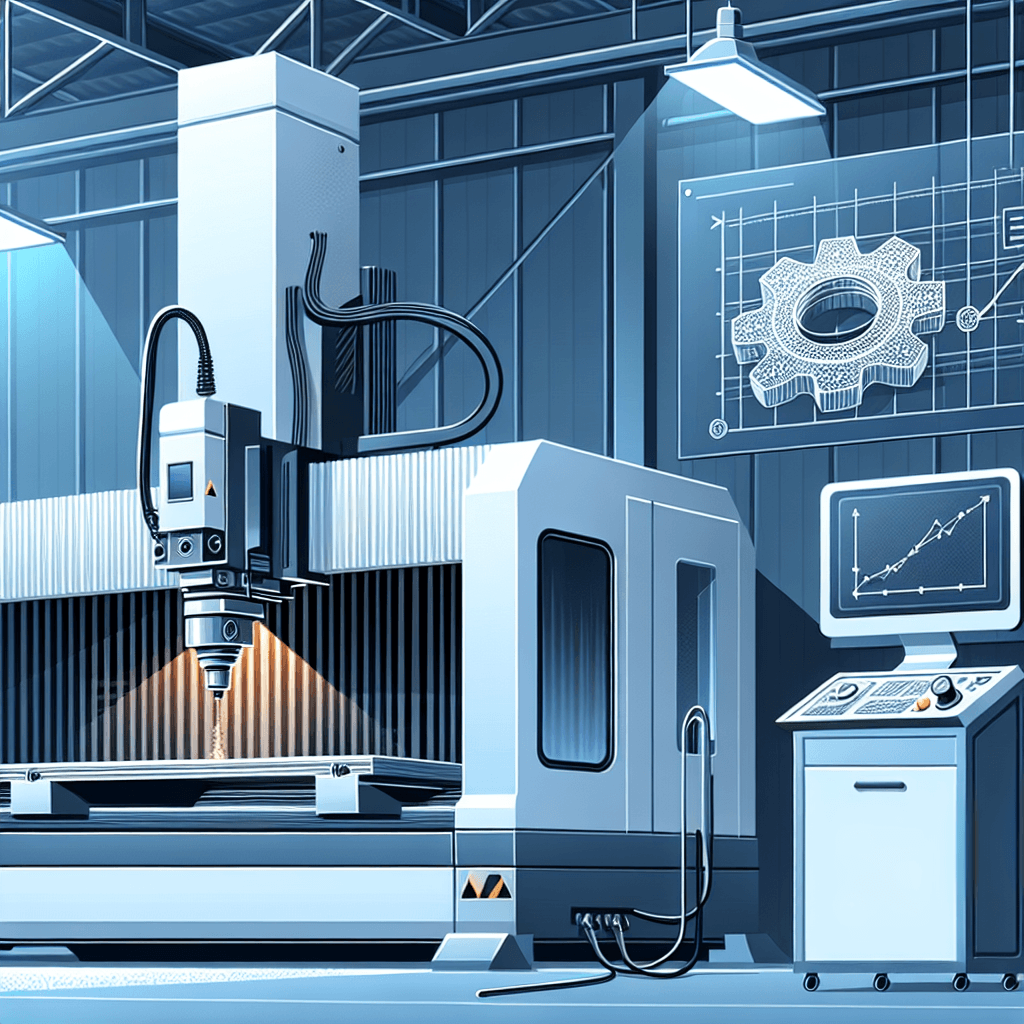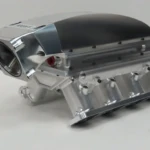CNC (computer numerical control) machining has become the cornerstone of modern manufacturing. CNC machines have revolutionized the way the industry operates with their ability to manufacture complex parts with unparalleled precision using a variety of materials. However, the complexity of large CNC machining projects requires a meticulous approach to ensure optimal results. This article delves into the complexities of maximizing accuracy in large-scale CNC machining projects, exploring technological advancements, material selection, design considerations, programming techniques, and practical applications.
Learn about CNC machining
CNC machining refers to the use of computer-controlled tools to cut, shape and finish materials. The main advantage of CNC machining is the ability to consistently produce high-precision parts. This technology enables manufacturers to produce complex designs that are nearly impossible to achieve with manual machining.
How CNC machining works
CNC machine tools operate according to a set of programming instructions, usually written in G-code. This code instructs the machine how to move, what speed to use and which tools to use. The three main types of CNC machine tools include:
- CNC milling machine: For cutting and shaping materials using rotary tools.
- CNC lathe: Used for forming cylindrical parts by rotation.
- CNC milling machine: Operates similarly to a grinder, but is generally designed for use with softer materials.
The role of precision in CNC machining
The accuracy of CNC machining is defined by the machine’s ability to manufacture parts within specified limits. Tolerance levels determine how close a part’s actual dimensions are to its ideal dimensions. For large projects, maintaining tight tolerances becomes increasingly complex, requiring advanced technology and careful planning.
The importance of large-scale CNC machining project planning
In large CNC machining projects, effective planning can determine the success or failure of the operation. Proper project planning should include the following elements:
- Goal definition: Clearly define the goals and specifications of the project, including materials, tolerances, and finished product quality.
- Timeline management: Establish a realistic timeline that considers all aspects of the machining process, from design to delivery.
- Resource allocation: Ensures the necessary machinery, tools, and human resources are available to meet project needs.
Project scope
Defining the project scope is critical to managing expectations. This includes specifying the type of material to be used, part dimensions, required tolerances and finishing processes. This scope helps determine the machinery required and identify potential technical limitations.
Material selection for precision machining
Choosing the right material is fundamental to achieving accuracy on your CNC machining project. There are many factors that influence material selection, including mechanical properties, processability and surface quality. The following are some materials commonly used in large-scale CNC machining:
Metal
- aluminum: Aluminum is lightweight and easy to machine, often used for parts requiring a good strength-to-weight ratio.
- steel: While steel’s hardness makes it more challenging to machine, its superior strength makes it ideal for highly stressed components.
- titanium: Although expensive, titanium is prized for its strength and corrosion resistance and is often used in aerospace applications.
plastic
- acrylic fiber: This plastic offers excellent transparency and is easier to work with than harder materials.
- nylon: Nylon is known for its durability and is often used in parts that require wear resistance.
composite materials
While composite materials can present processing challenges, they can also provide excellent performance in weight-sensitive applications. When programming CNC machine tools, composition must be properly considered to prevent damage to the material during machining.
Design considerations for high-precision machining
In large-scale CNC machining projects, design plays a vital role in ensuring accuracy. Here are a few key design considerations to improve machining accuracy:
Tolerance specifications
Before starting the design process, it is critical to define the acceptable tolerance levels for each machined part. The design should reflect these tolerances, and engineers must be familiar with the machine’s capabilities to ensure they are realistic.
Feature complexity
More complex geometries affect manufacturing accuracy. Designers should strive to keep functionality simple and choose practical shapes while still meeting functional requirements.
Tool path optimization
Optimized tool paths can significantly improve machining accuracy. By analyzing cutting paths and reducing unnecessary movement, manufacturers can minimize inaccuracies caused by machine inertia.
Analog Technology
Using advanced simulation software, designers can visualize the CNC machining process and identify potential problems before production begins. This proactive approach saves time and costs by catching errors early.
Precision machining programming technology
CNC programming is at the heart of precision machining. Correct programming can greatly impact the performance of your machine and the quality of your produced parts. Here are basic programming strategies:
G code optimization
G-code is the basis of CNC operations. Optimizing G-code can increase processing speed while maintaining accuracy. This includes refining motion commands to reduce non-cutting time and ensure smooth transitions between cutting actions.
Use of post-processors
Postprocessors convert design files into G-code tailored for a specific machine. Utilizing advanced post-processing software can simplify this conversion, minimizing errors that can occur due to manual coding.
Tool selection and management
Choosing the right tool is critical to achieving the desired finish and tolerances. Additionally, maintaining tools to prevent wear and ensuring they are set up correctly before machining can prevent inaccuracies.
Advanced CNC machining technology
The development of CNC machining technology has significantly improved accuracy. Here are some notable improvements:
5-axis machining
5-axis machining enables multi-directional cutting, enabling complex geometries to be produced with high precision. This feature minimizes the need to reposition parts and reduces errors associated with re-clamping.
adaptive machining
Adaptive machining technology allows CNC machine tools to adjust cutting parameters in real time based on feedback from sensors. This approach allows for more consistent accuracy, especially in challenging materials.
Laser processing
Combining CNC technology with laser cutting allows precise cutting and engraving, especially on difficult-to-machine materials. This technology is the best choice for achieving fine details and intricate designs.
Practical applications of precision CNC machining
Precision CNC machining is used in multiple industries for its ability to produce high-quality parts. Here are some noteworthy applications:
aerospace
In the aerospace industry, components must meet strict safety and performance standards. CNC machining allows manufacturers to create high-precision, lightweight yet strong components that are critical to aircraft performance and safety features.
car
In automotive manufacturing, precision CNC machining is used to create engine parts, transmission parts and complex assemblies. The automotive industry benefits from the speed and precision of CNC processes, as high throughput is a hallmark of the industry.
medical device
The medical device industry requires extremely high precision due to the critical nature of its components. CNC machining is used to manufacture surgical instruments, prosthetics and implantable devices, where tight tolerances and surface finishes must be impeccable to ensure safety and effectiveness.
industrial equipment
Precision CNC machining is essential for producing industrial machinery components where performance and durability are critical. Components must work together perfectly to ensure that the equipment operates efficiently and does not malfunction.
in conclusion
Maximizing accuracy on large-scale CNC machining projects is a complex process that involves a carefully coordinated approach spanning planning, material selection, design considerations, programming techniques and utilizing advanced technologies. By employing these strategies, manufacturers can improve the accuracy and efficiency of CNC machining operations to produce high-quality components that meet different industrial needs.
In a competitive market where precision can set a company apart, investing in CNC machining training, technology and best practices is critical to success. As manufacturers continue to push the limits of CNC machine tools, staying informed and adaptable will ensure they remain at the forefront of precision machining.
FAQ section
Q: What is CNC machining?
Answer: CNC machining is a manufacturing process that uses computer-controlled machines to cut, shape and finish materials with high precision.
Q: Why is accuracy important in CNC machining?
A: Accuracy is critical as it ensures parts meet specified tolerances and quality standards, which is especially important in industries such as aerospace and medical devices.
Q: What materials can be used for CNC processing?
A: CNC machining can process a variety of materials, including metals (e.g., aluminum, steel, titanium), plastics (e.g., nylon, acrylic), and composites.
Q: How to improve the accuracy of CNC machining projects?
A: Improvements can be achieved through careful planning, resource allocation, optimized tool paths, appropriate programming techniques, and utilizing advanced machining technologies such as 5-axis machining.
Q: What are the common applications of CNC machining?
A: Common applications include aerospace parts, automotive parts, medical devices and industrial equipment manufacturing.
Q: What is five-axis machining and what are its benefits?
A: 5-axis machining allows the cutting tool to approach the workpiece from different angles, enabling the creation of complex shapes with high precision and minimizing the need for re-clamping.
By adopting the insights discussed in this article, manufacturers can improve their project outcomes and ensure accuracy and quality in all aspects of CNC machining.
Daguang focuses on providing solutions such as precision CNC machining services (3-axis, 4-axis, 5-axis machining), CNC milling, 3D printing and rapid prototyping services.










































